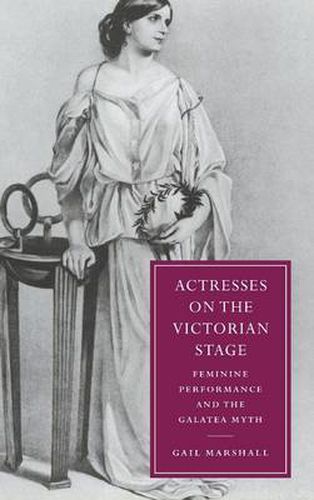Readings Newsletter
Become a Readings Member to make your shopping experience even easier.
Sign in or sign up for free!
You’re not far away from qualifying for FREE standard shipping within Australia
You’ve qualified for FREE standard shipping within Australia
The cart is loading…






Gail Marshall argues that the professional and personal history of the Victorian actress was largely defined by her negotiation with the sculptural metaphor, and that this was authorised and determined by the Ovidian myth of Pygmalion and Galatea. Drawing on evidence of theatrical fictions, visual representations, and popular culture’s assimilation of the sculptural image, as well as theatrical productions, she examines some of the manifestations of the sculptural metaphor on the legitimate English stage, and its implications for the actress in the later nineteenth century. Within the legitimate theatre, the ‘Galatea-aesthetic’ positioned actresses as predominantly visual and sexual commodities whose opportunities for interpretative engagement with their plays were minimal. This dominant aesthetic was effectively challenged only at the end of the century, with the advent of the ‘New’ drama, and the emergence of a body of autobiographical writings by actresses.
$9.00 standard shipping within Australia
FREE standard shipping within Australia for orders over $100.00
Express & International shipping calculated at checkout
Gail Marshall argues that the professional and personal history of the Victorian actress was largely defined by her negotiation with the sculptural metaphor, and that this was authorised and determined by the Ovidian myth of Pygmalion and Galatea. Drawing on evidence of theatrical fictions, visual representations, and popular culture’s assimilation of the sculptural image, as well as theatrical productions, she examines some of the manifestations of the sculptural metaphor on the legitimate English stage, and its implications for the actress in the later nineteenth century. Within the legitimate theatre, the ‘Galatea-aesthetic’ positioned actresses as predominantly visual and sexual commodities whose opportunities for interpretative engagement with their plays were minimal. This dominant aesthetic was effectively challenged only at the end of the century, with the advent of the ‘New’ drama, and the emergence of a body of autobiographical writings by actresses.